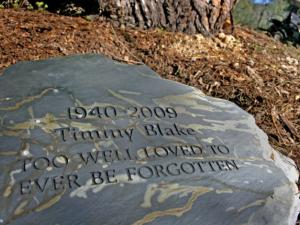 Last month, South Africa opened the country’s first green cemetery. Weisenhof Legacy Park was created within the oldest privately-owned nature reserve in the country. The park set aside a portion of its space for burial and memorial sites. It will remain a nature reserve, but the designated portion, previously agricultural land, will now be available for natural burial and scattering of cremation ashes.
Last month, South Africa opened the country’s first green cemetery. Weisenhof Legacy Park was created within the oldest privately-owned nature reserve in the country. The park set aside a portion of its space for burial and memorial sites. It will remain a nature reserve, but the designated portion, previously agricultural land, will now be available for natural burial and scattering of cremation ashes.
“The legacy park is a more natural alternative to traditional cemeteries, burials or cremation, and a safer, more tranquil place for family members to remember their loved ones,” said Willie Fouche, the park’s chief executive.
Visitors coming to the park to pay their respects will also have access to its scenery and wildlife. The nature reserve is set in the foothills of South Africa’s Simonsberg Mountains, near the city of Stellenbosch.
People have the choice of either burial or scattering of ashes on their chosen plot in the park. Ashes are scattered along with wildflower seeds to facilitate the growth of field flowers, so that the park is filled with blooming flowers each season. Although burial remains the most popular choice for disposition in the country – as it does across the U.K. and the U.S. – interest in natural burial and cremation continues to grow worldwide.
The combination of population growth and the death toll from HIV/AIDS in South Africa has contributed to increasingly overcrowded cemeteries. Traditional cemeteries become plots of land devoid of any other use that pose significant environmental risks. Chemicals used in embalming and the creation of elaborate traditional caskets introduce dangerous toxins to the environment, as well as leave behind non-biodegradable materials like the plaques or ornaments that often adorn caskets.
Green cemeteries and natural burial, on the other hand, are a low-impact way to be laid to rest. Green coffins are much simpler and made from biodegradable materials like sturdy cardboard, woven branches, wicker, bamboo, or papier-mâché, or bodies are buried in a burial shroud made of natural materials. Green cemeteries allow for burial and memorial sites without the detrimental impact on the land of traditional cemeteries.
Check out the SevenPonds website for more information and green burial resources.

 Green Burial Makes its Way to South Africa
Green Burial Makes its Way to South Africa



 How to Comfort A Dying Loved One
How to Comfort A Dying Loved One
 Our Annual Seven Holiday Gifts for Someone Who Is Grieving, 2024 Edition
Our Annual Seven Holiday Gifts for Someone Who Is Grieving, 2024 Edition














